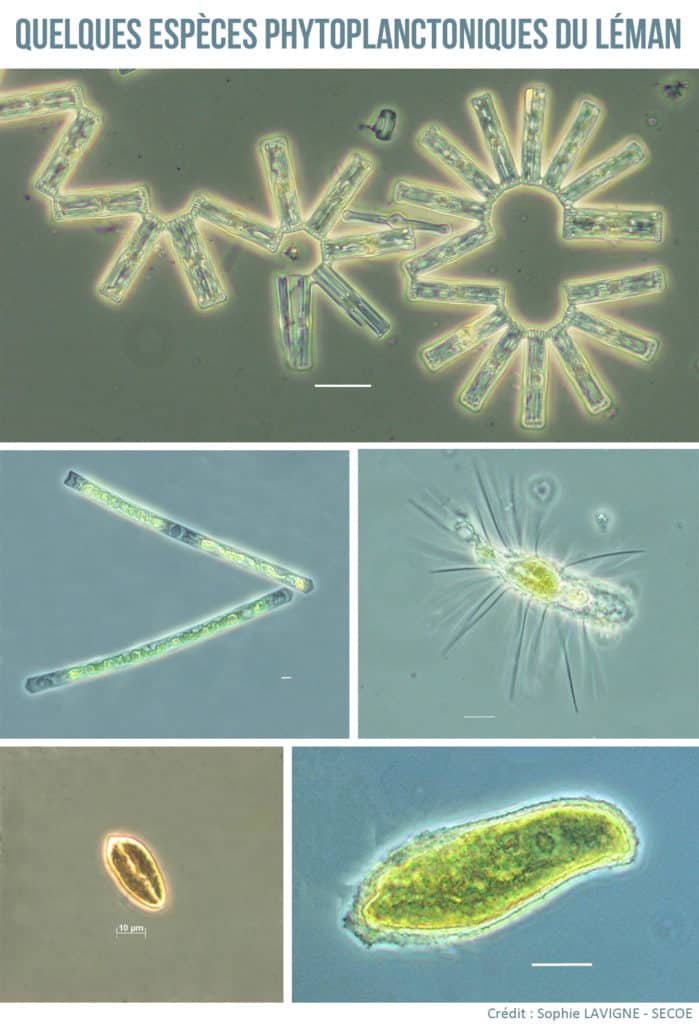April 2021: Lake surface warming and its consequences
SPRING: Warm-up and restart of aquatic life (April-June)
From spring onwards, CIPEL's monitoring program will return to a fortnightly schedule, in order to keep a close eye on warming and the renewed development of phytoplankton on the lake's surface. Phytoplankton is the plant plankton that develops each year in the form of microalgae suspended in the lake waters.
Why go from 1 withdrawal/month in winter to 2 withdrawals/month in spring?
More frequent sampling is essential to measure the impact of global warming. This has shown that the lake's surface waters are warming earlier and earlier each year. It would also appear that phytoplankton development is starting up again earlier and earlier each year.
Comments of April 20, 2021

A phytoplankton species typical of Lake Geneva in springtime
There are numerous phytoplankton species in the lake waters. One in particular thrives in spring. Tabellaria floculosa belongs to a group called diatoms. It measures 0.1 mm and has the particularity of being enveloped in a skeleton made from silica, called a frustule.
Impact on water transparency
As you may have noticed, the lake is less transparent in early spring than in winter! This is because phytoplankton growth reduces the transparency of the lake water. The more phytoplankton, the less transparent the water.









